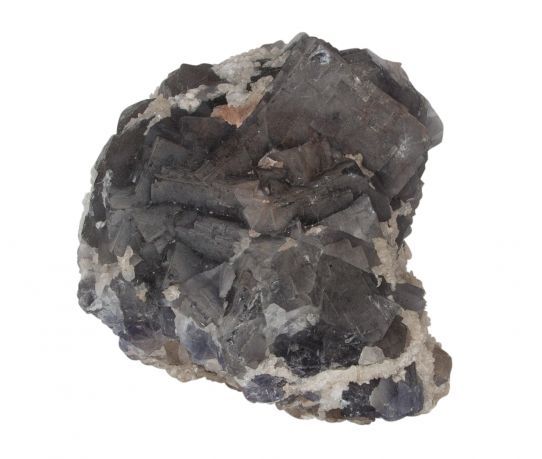We use cookies to make your experience better.
Fluorite groups come from the well-known K2 mountain range in Afghanistan.
The K2 (Urdu: کے ٹو, Kaitu) is an 8611 meter high mountain peak on the Pakistani-Chinese border in the Karakoram. It is the second highest mountain in the world, after Mount Everest. The K2 is considered 'the holy grail' for mountaineers and is according to many experts the most difficult mountain peak in the world to climb. The mountain has a death rate of 25%. For a long time the K2 had no name as the mountain was not immediately visible to the local population. In 1856 the area was surveyed and described by British Colonel Thomas George Montgomerie as part of the Great Trigonometrical Survey. This gave the mountain the abbreviation "K2", because it is the second mountain that Montgomerie encountered in the Karakoram. Montgomerie numbered the mountains in the order he saw them. The other peaks were originally named K1, K3, K4 and K5, but over time these were renamed to Masherbrum, Broad Peak, Gasherbrum II and Gasherbrum I respectively. The reason that the name K2 has remained is the fact that no local name existed. Other but less known names for the K2 are Mount Godwin-Austen, Lamba Pahar ("Long Mountain" in Urdu), Qogir Feng, Chogori or Dapsang. In Balti there is no other name than K2, which is pronounced 'Ketu'.
Fluorite has been used for centuries as a fluxing agent to more easily melt metals from ore and allow the slag to run off better. For that reason, fluorite is also called fluorspar. Fluorite can have all kinds of colors: white, yellow, orange, pink, brown, green, blue, purple and transparent. The crystal shape is clearly visible: usually a regular octahedron. These facts make the mineral attractive to collectors. The phenomenon of fluorescence is named after this gemstone. It was discovered during the processing of metal that fluorite glows in the dark, if it had previously been in daylight. The element fluor, discovered in 1886, also takes its name from fluorite. Fluorite is a real study and thinking stone. It helps to see broad outlines in the study material and to make connections with existing knowledge. This makes the information easier to organize and the material can be better absorbed. This mineral brings you to your core in a gentle, yet fast way. It brings out the best in you, both physically and mentally. Because fluorite comes in so many colors, it was and is often used to imitate other gemstones.
| Dimensions | 60-100mm |
|---|












